 | « Back to article | Print this article |
Designers Rimple and Harpreet Narula share their creative journey.
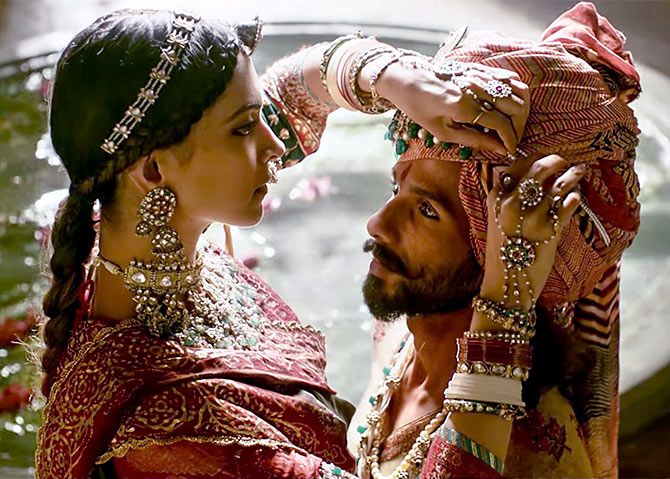
Sanjay Leela Bhansali's controversial Padmaavat is slated to release this week. The film's story is set in Mewar, Rajasthan.
Delhi-based designers Rimple and Harpreet Narula have conceptualised the costumes of the lead characters -- played by Deepika Padukone, Shahid Kapoor and Ranveer Singh.
In an interview to Rediff.com, the couple spoke at length about how the costumes are antique and irreplaceable.
The duo is expected to showcase a few key pieces from the film's collection at an exhibition at Roda Al Murooj Hotel in Dubai on January 27.
Ahead of the film's release in theatres, the designers took to social media to explain how each attire was put together.
Deepika Padukone

All photographs: Viacom18/Padmaavat
"The extensive use of colours in Rajput attire has connotations associated with culture, religion and climate of the province with each colour having a deep rooted meaning that was used to convey emotions, seasons, customs and ceremonial occasions," the designers wrote in an Instagram post.
"Kesariya (saffron) and other shades of yellow are extensively used in the attire of both men and women and have since time immemorial been regarded as auspicious colours.
"Traditionally, the colour was prepared using saffron leaves and was hence used mostly in the garments of the Rajput aristocracy, given the expensive value of the raw material.
"The colour was used in their wedding robes and was also associated with the brave warriors who died fighting on the battlefield.
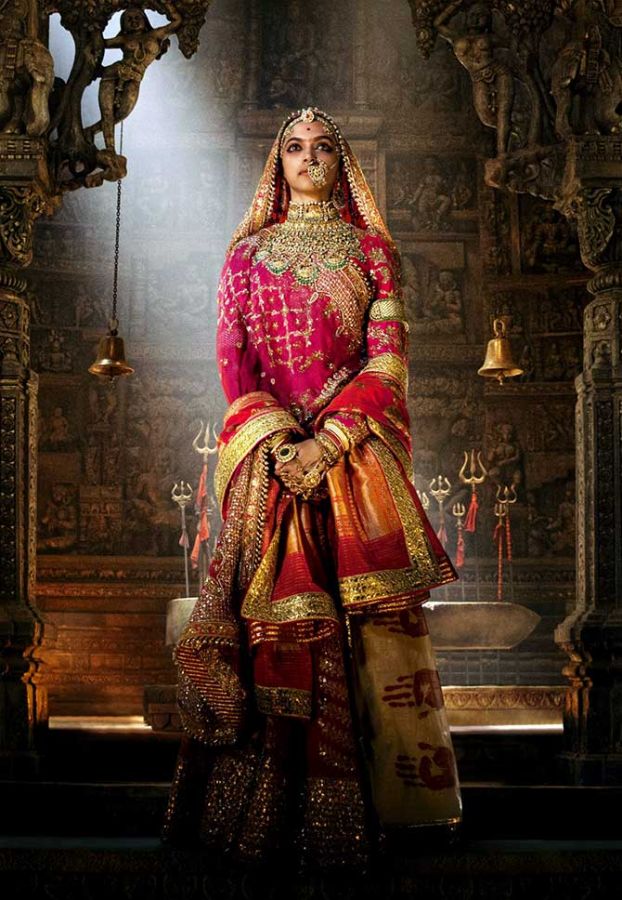
Rimple and Harpreet wanted the outfits to look authentic and spent months finalising the details and putting it all together.
"For Padmavati's royal looks we got textiles developed using the before mentioned traditional dyeing methods at crafts clusters near Jaipur to get the right tone of the colour so as to maintain the authenticity of the province," the designer said.
"The textiles were layered with hand block printing done in Bagru and Sanganer; and Varq Ka Kaam done by specialist artisan clusters in Rajasthan.
"The base textiles thus developed, were then ornamented with traditional embroideries including Mukke ka Kaam, Pakko Bharat, Salma and Sitara, Silk Floss thread work using traditional embroidery stitches in various karkhanas spread across Jaipur and Lucknow; and rendered onto the elaborate Odhnas and Ghaghras.
"The draping of the odhnas was done in the traditional way after careful study of miniature paintings as well as murals and frescoes that are still found in various forts/havelis of Rajasthan's Mewar region that our design team visited."
***
Shahid Kapoor
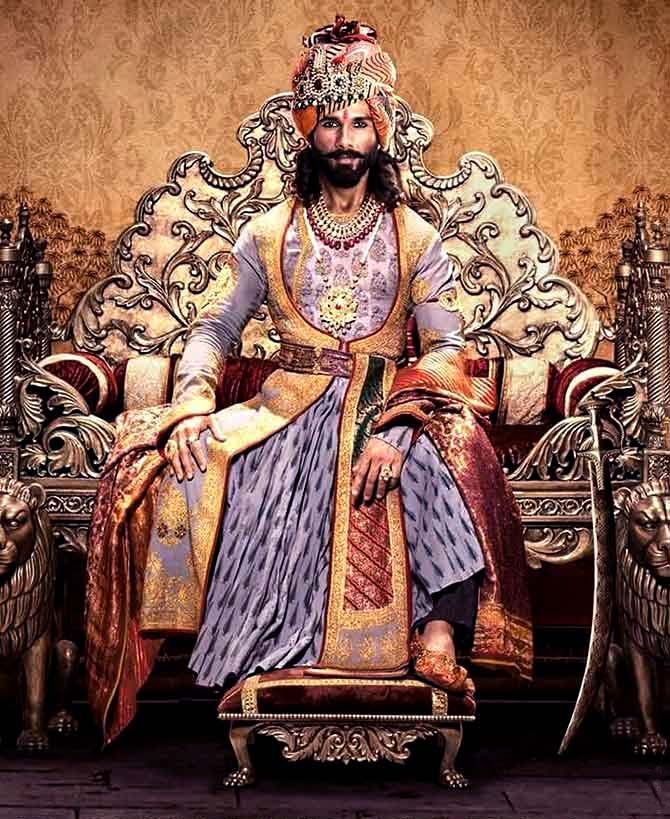
Shahid's royal court looks, according to the designers "feature meticulous detailing that were achieved over a period of six months of intensive research."
"The Calico Museum has a number of examples of garments that gave us an idea as to how the pieces once might have been ornamented and used."
The angrakhas, dhotis, lungis, turbans and patkas were carefully studied for the fabrics that were used and the placements of the prints and embroideries.
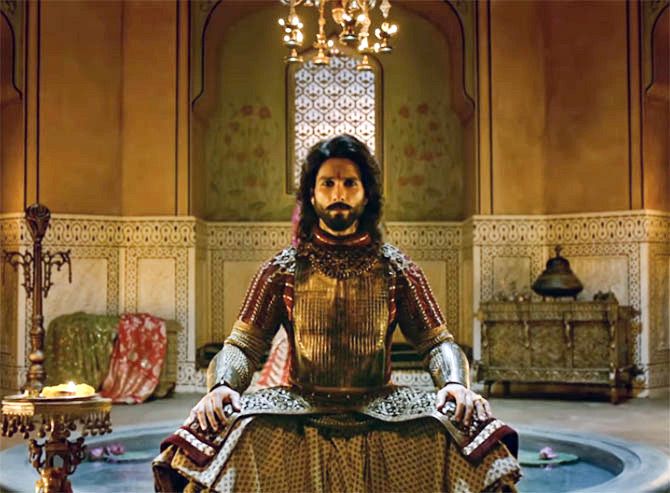
Detailing the use of ancient techniques, the couple explained how the weather also played a crucial role: "The actual textile development had to be finished off during the winter months as the humidity of the monsoon period adversely effects the quality of the block printing, so we had to work against the clock to get everything ready."
"Embroideries were done using cotton and silk floss thread; executed using traditional embroidery stitches such as herringbone, button hole, blanket, chain, darning and single feather stitches to achieve the delicate base textures. These were then layered on with other more ornate embroideries done in zari and badla. Mukke ka kaam and Pakko Bharat techniques were juxtaposed on the court robes that are further layered with printed/embroidered angrakhas."
Ranveer Singh
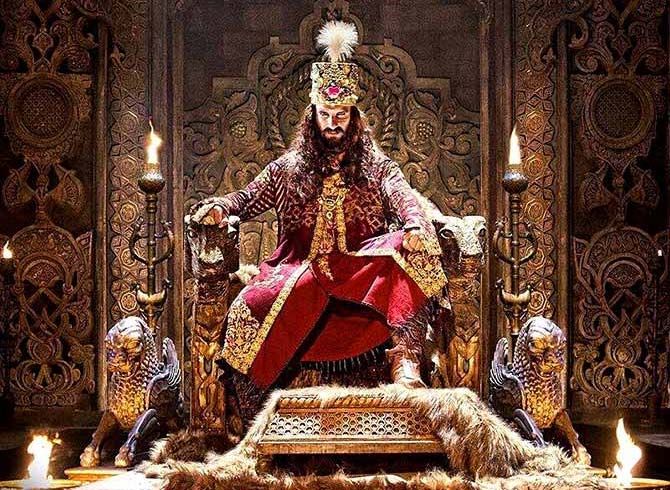
Ranveer Singh's character is inspired by Alaudin Khilji, a Turkish-Afghan ruler.
Khilji's nomadic background played a key role in contemplating his look.
"For Khilji's ornate court looks, given his nomadic origins, we studied various samples of vintage textiles and clothes of the Ottoman empire (spanning from Turkey to Afghanistan) that we could get our hands on as well as old manuscripts/ travelers’ accounts and the writings of court historians and sufi saints such as the 16th century historian Abd-ul-Qadir Bada'uni for reference when it came to the ornate styling and layering of the looks," the designer wrote.
During the two years of working on the project, the designer duo "revisited so many crafts and traditional embroideries throughout the in-depth research process and interactions with artisans, and used old-forgotten techniques or ones that are barely surviving in today's time."
"The Delhi Sultanate was a vast empire -- spanning in reach from Afghanistan to Kashmir and Punjab, Rajasthan, Sindh and areas bordering the Deccan. This gave us a lot of liberty to explore various motifs from all these different regions and imbibe them into the costumes of the Sultan-Khilji.
"The Chinar Butti, stylized paisleys, Badaam Butti, Badaam Keri, Bathak Punj are used along with curvilinear motifs derived from sacred geometry- the moon and the star, Afghan, Mongol and Turkish elements to showcase the breadth and power of Khilji’s persona and the vast empire he amassed through various conquests and battles," Narula shared.
